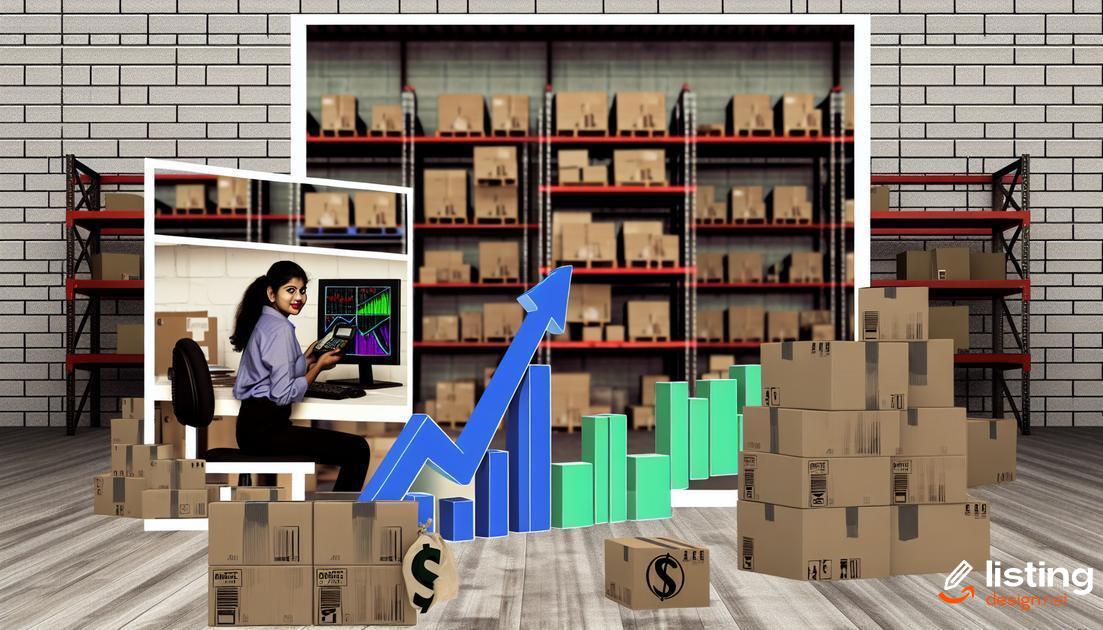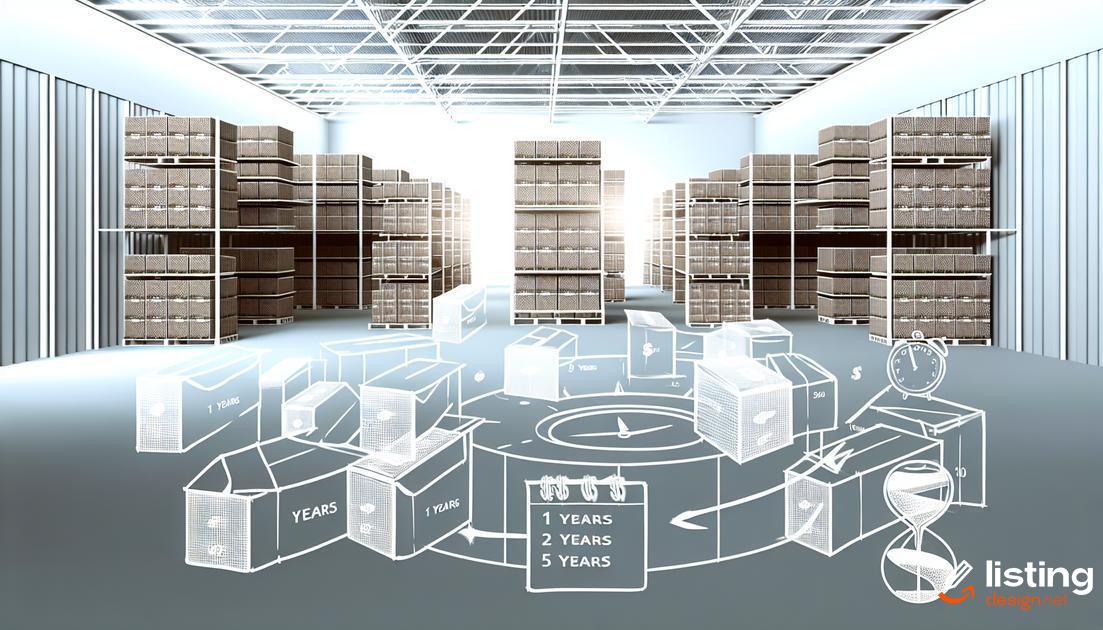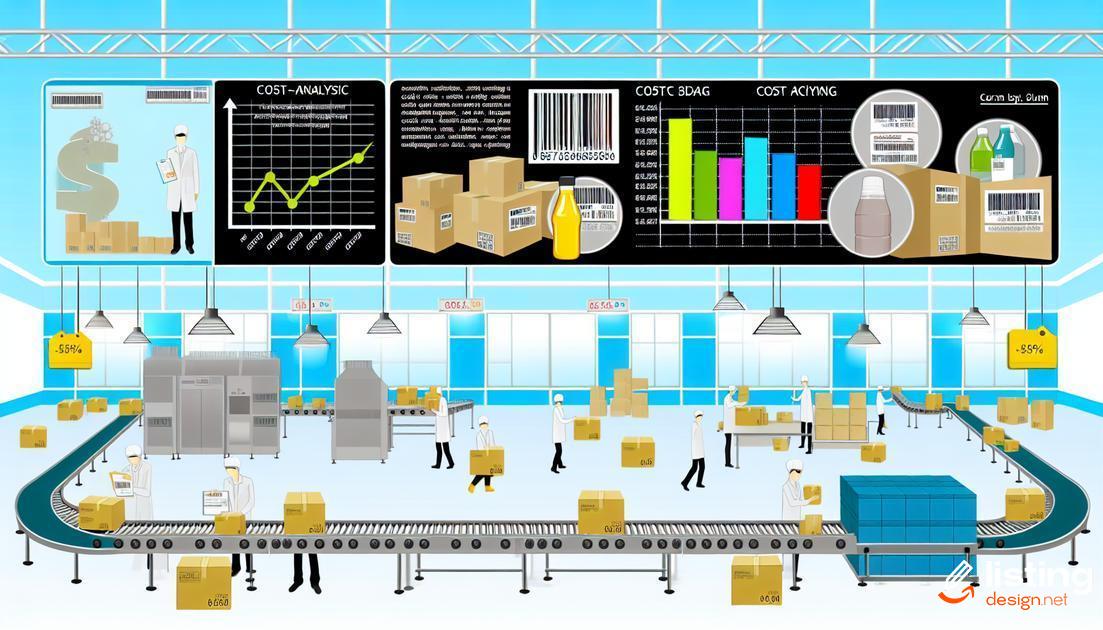Understanding the Amazon FBA cost breakdown is crucial for any seller looking to maximize profits on the platform. Amazon FBA offers a range of services including storage, packaging, and shipping for your products, but these services come with various fees. In this post, we will dive into each fee associated with Amazon FBA, from inventory storage to long-term storage fees, and provide tips on how to reduce these costs effectively.
Table of Contents
What is Amazon FBA?
Amazon FBA (Fulfillment by Amazon) is a service provided by Amazon to third-party sellers, allowing them to store their products in Amazon’s fulfillment centers. When a customer places an order, Amazon takes care of the storage, packaging, and shipping on behalf of the seller. This simplifies logistics for sellers and ensures products are delivered promptly to customers.
Using Amazon FBA also provides sellers with access to Amazon’s customer service and returns management systems. This helps streamline operations and ensures customer satisfaction. Sellers benefit from Amazon’s robust infrastructure and global reach, making it easier to scale their businesses.
Additionally, products fulfilled by Amazon FBA are eligible for Amazon Prime, offering fast and free shipping to Prime members. This can increase product visibility and sales, as many customers prefer shopping for Prime-eligible items.
Primary Fees in Amazon FBA

When utilizing Amazon FBA, sellers need to be aware of the primary fees involved. These can significantly impact profitability. The most common fees are:
1. Referral Fees:
Amazon charges a referral fee for each item sold, which is a percentage of the total sales price. This fee varies by category and ranges between 6% to 45%, with most categories falling between 8% and 15%.
2. Fulfillment Fees:
These are fees for picking, packing, and shipping your products. The cost is based on the product’s size and weight. Standard-size items incur lower fees compared to oversized items.
3. Monthly Storage Fees:
Amazon charges a monthly storage fee per cubic foot for inventory stored in their fulfillment centers. These fees are higher during peak holiday seasons (October to December) and lower the rest of the year.
4. Long-Term Storage Fees:
Products stored for more than 365 days will incur long-term storage fees. These fees are calculated per cubic foot or per unit, whichever is greater, and are charged on a monthly basis.
5. Removal Order Fees:
If you need to remove inventory from Amazon’s fulfillment centers, there are fees associated with processing and shipping the returns. These costs depend on the size and weight of the items being removed.
Conclusively, understanding primarily these fees is essential for managing costs and ensuring profitability within the Amazon FBA program.
Inventory Storage Fees
When using Amazon FBA, inventory storage fees are a critical component of your overall costs. These fees are charged based on the amount of space your products occupy in Amazon’s fulfillment centers.
Monthly Storage Fees
The monthly storage fees are calculated based on the cubic feet occupied by your inventory. Typically, inventory storage fees vary depending on the time of year:
- January to September: $0.75 per cubic foot (standard-size), $0.48 per cubic foot (oversize).
- October to December: $2.40 per cubic foot (standard-size), $1.20 per cubic foot (oversize).
Long-Term Storage Fees
Long-term storage fees are incurred if inventory is stored in Amazon fulfillment centers for longer than 365 days. These fees are significantly higher and are charged monthly:
- Inventory aged 271 to 365 days: $6.90 per cubic foot or $0.15 per unit, whichever is higher.
- Inventory aged over 365 days: $6.90 per cubic foot or $0.15 per unit, whichever is higher.
Managing Storage Fees
To manage storage fees effectively, consider the following strategies:
- Inventory Forecasting: Accurately predict demand to avoid overstocking.
- Aged Inventory Removal: Regularly review and remove aged inventory to avoid long-term storage fees.
- FBA Inventory Health Reports: Utilize Amazon’s tools to monitor and maintain optimal inventory levels.
Fulfillment Fees

Fulfillment fees are one of the primary costs you will encounter when using Amazon FBA, and it is crucial to understand their structure to properly manage your business expenses. These fees vary based on the size and weight of your products, as well as the type of item being fulfilled.
Amazon’s fulfillment fees are divided into different categories, which are:
Standard-Size Products
For standard-size items, Amazon considers dimensions and weight to determine the costs. Small standard-size items are cheaper to fulfill compared to large standard-size goods.
- Small standard-size: Items up to 12 oz.
- Large standard-size: Items over 12 oz. but within the dimensions of 18″ x 14″ x 8″.
Oversize Products
For items that exceed the standard sizes, the fulfillment fees are higher due to additional handling and storage requirements.
- Small oversize: Items over 18″ x 14″ x 8″ but under 60 lbs.
- Medium oversize: Items that are larger and heavier, raising the fulfillment cost significantly.
Understanding these categories and their associated fees is vital for optimizing your pricing strategy on Amazon.
Shipping to Amazon FBA
Shipping products to Amazon FBA requires adherence to Amazon’s specific guidelines to ensure your items are processed and made available for sale efficiently. Preparation: Before shipping your products, make sure they are properly labeled and packaged according to Amazon’s requirements. Each unit must have a scannable barcode (UPC, EAN, or FNSKU) and be securely packed to prevent damage during transport.
Choosing a Carrier: It’s crucial to select a reliable shipping carrier. Amazon partners with various carriers and offers discounted shipping rates through their Partnered Carrier Program. Alternatively, you can use your own carrier, but be sure to compare shipping costs and transit times.
Creating a Shipment Plan: Inside your Seller Central account, you can create a shipment plan where you provide details about your inventory, such as product quantities and their intended destination fulfillment centers. Accurate information here ensures smooth processing and proper inventory tracking.
Shipping Labels: After creating your shipment plan, you will generate shipping labels directly from Seller Central. These labels must be attached to each box and include all necessary information for Amazon to route your shipment correctly. Make sure the labels are clear and readable.
Box Content Information: It’s essential to provide detailed information about the contents of each box you ship to Amazon FBA. This helps Amazon streamline the check-in process upon arrival at the fulfillment center, reducing delays and errors.
By following these guidelines, you can ensure a smooth shipping process to Amazon FBA, minimizing potential delays and extra costs associated with non-compliance.
Long-Term Storage Fees

Amazon FBA long-term storage fees are charged for items that have been in Amazon’s fulfillment centers for an extended period. These fees apply to items stored for more than 365 days. The purpose of these fees is to encourage sellers to manage their inventory efficiently and avoid stocking items that are not selling.
For items stored over 365 days, the monthly fee is charged in addition to the regular monthly storage fees. The long-term storage fee is calculated at $6.90 per cubic foot or $0.15 per unit, whichever is greater.
To avoid long-term storage fees, implement strategies such as:
- Monitoring inventory age: Regularly review your inventory age and sales performance to identify slow-moving products.
- Promotions and discounts: Offer discounts or run promotions to move older inventory more quickly.
- Removal orders: Create a removal order for slow-moving items to avoid accruing long-term storage fees.
- Inventory management tools: Utilize Amazon’s inventory management tools to stay on top of your inventory metrics and manage stock levels effectively.
By proactively managing your inventory, you can minimize the risk of incurring Amazon FBA long-term storage fees.
Removal and Disposal Fees
When managing your Amazon FBA inventory, there may come a time when you need to remove or dispose of unsellable or excess stock. In such cases, Amazon charges specific removal and disposal fees which you should be aware of.
For removal orders, Amazon allows you to have your inventory returned to you. The fees for this service depend on the size and weight of the item. Generally, items weighing less than 1 lb cost around $0.50 per item, while standard-size items may cost up to $0.60 per item. Oversize items, on the other hand, can range from $1.30 to $2.20 per item.
In cases where disposal is the only viable option, Amazon offers a disposal service. This service involves a small fee per item, typically around $0.15 for standard-size items and up to $0.30 for oversize items. Note that disposal fees are usually lower compared to removal fees, making it a cost-effective solution for handling unsellable inventory.
It is important to plan your inventory management strategies carefully to minimize the need for these services. Regularly monitoring inventory performance and sales trends can help in reducing overstock and unsellable items, thus avoiding additional costs.
Labeling and Packaging Costs

Labeling and packaging are critical components for successfully selling products through Amazon FBA. These costs can vary significantly depending on the nature of the product, the volume of packaging required, and specific labeling requirements.
Labeling Requirements
Amazon has strict guidelines for product labeling that sellers must adhere to. Each product needs a scannable barcode that links it to your inventory. These can be manufacturer barcodes or Amazon FNSKU labels.
Failure to comply with labeling requirements can result in your products being rejected at the fulfillment center or incurring additional fees for relabeling.
Packaging Standards
To protect items during storage and shipping, Amazon mandates certain packaging standards. This includes using appropriate box sizes, sufficient padding, and sturdy materials to prevent damage.
Overpacking and improper packaging can lead to higher shipping costs and may affect customer satisfaction due to damaged goods.
Bulk Packaging Services
Although optional, Amazon offers preparation services such as poly bagging, bubble wrapping, and labeling. Opting for these services can save time but may increase overall costs.
Cost Management Strategies
It’s crucial to factor these labeling and packaging costs into your product pricing strategy. Purchasing materials in bulk, using efficient packaging designs, and leveraging Amazon’s labeling services prudently can help in managing these expenses.
Advertising and Marketing Expenses
When selling products on Amazon through FBA, advertising and marketing expenses can quickly add up. It’s crucial to understand the types of costs involved and how to optimize your spending effectively.
PPC Campaigns
One significant area of expense is Pay-Per-Click (PPC) campaigns. PPC allows your listings to appear higher in search results based on certain keywords. While it can drive considerable traffic to your listings, it’s essential to monitor and adjust your campaigns to ensure they’re cost-effective.
Sponsored Products
Another advertising option is Sponsored Products. These are ads that appear within the Amazon marketplace and are highly effective in increasing visibility. However, Sponsored Products campaigns can become costly if not managed properly. Regularly review your bids and keyword performance to get the most out of your budget.
Promotions and Coupons
Running promotions and offering coupons can attract more buyers but come with associated costs. Amazon charges a fee for each coupon redeemed, and overuse can lead to a decrease in overall profit margins. Balance these promotional tools wisely to maintain profitability.
Investing in advertising and marketing is necessary for growing your Amazon FBA business. Yet, it’s equally important to track and manage these expenses to ensure they’re contributing positively to your overall strategy.
Hidden Costs in Amazon FBA

When engaging in Amazon FBA, there are several unforeseen expenses that sellers should be mindful of. Returns Processing Fee: Amazon charges a fee to handle customer returns, which can become costly if the return rate is high. Refund Administration Fee: This fee is levied when processing a refund for the customer, typically a percentage of the total refund amount.
Unplanned Service Fees: These fees are incurred when inventory arrives at an Amazon fulfillment center and requires additional services such as labeling or prepping. Inventory Placement Service Fees: This service allows sellers to send inventory to a single location, and distribute it across different warehouses, but comes with significant charges.
Environmental Fees: In some regions, sellers might be subject to eco fees, depending on the type of goods sold. These are additional costs tied to the disposal or recycling of certain products. Lastly, Overage Fees: These apply if inventory surpasses the storage limits agreed upon with Amazon. Monitoring stock levels regularly can help prevent these unexpected charges.
Tips to Reduce Amazon FBA Costs
- Optimize Your Inventory Management: Regularly monitor inventory levels to avoid long-term storage fees. Keep track of fast and slow-moving items and adjust your stock accordingly.
- Negotiate Better Shipping Rates: Partner with shipping carriers to negotiate lower rates for sending products to Amazon’s warehouses. Consolidate shipments to reduce overall shipping costs.
- Leverage Amazon’s Promotions: Take advantage of Amazon’s discounted storage fees during off-peak seasons and other promotions. This can help you save a considerable amount on storage costs.
- Efficient Packaging: Use the right size of packaging to minimize the weight and dimensions of your shipments. Smaller packages often cost less to store and ship.
- Use Fulfillment by Merchant (FBM) for Slow-Moving Items: For products that do not sell quickly, consider using FBM to avoid long-term storage fees.
- Minimize Returns and Refunds: Ensure accurate product descriptions and quality to reduce the likelihood of returns and refunds, which can incur additional fees.
- Take Advantage of Amazon’s FBA Calculator: Use the FBA calculator to estimate costs and profitability for each product. This tool helps in forecasting fees and making informed decisions.
- Bundle Products: Creating product bundles can increase sales velocity and reduce per-unit fulfillment costs.
- Monitor Advertising Spend: Regularly review and optimize your PPC campaigns to ensure you are not overspending on ads relative to your sales.
- Regular Audits: Conduct periodic audits of your FBA fees and compare them against your revenue to identify any discrepancies or areas where you can reduce costs.
Conclusion: Is Amazon FBA Worth It?

Calculating Return on Investment (ROI): Consider all the fees we have discussed, including storage, fulfillment, shipping, and hidden costs. ROI calculation helps determine if the margins are adequate for your business goals. A detailed spreadsheet or financial tool can assist in accurately assessing your net profit.
Financial Flexibility: Ensure your business has the financial flexibility to absorb the various costs without compromising cash flow. This is particularly important for inventory-heavy businesses where upfront costs can be substantial.
Scalability: Evaluate whether your business can scale within Amazon FBA’s framework. Assess if the potential profit increase justifies the additional costs involved in scaling operations, including increased storage and fulfillment fees.
Competitive Analysis: Benchmark your costs and ROI against competitors in your niche. Understanding where you stand in terms of costs and profitability can offer insight into whether you can sustainably compete in the marketplace.
Long-Term Strategy: Consider the long-term strategy of your business. Analyze if Amazon FBA aligns with your growth objectives and whether it provides a sustainable model for your future plans.
Constant Monitoring: Regularly monitor all related expenses, as fees and policies may change. Keeping an updated overview of your costs will help you make informed decisions and adapt quickly to any changes in the ecosystem.


